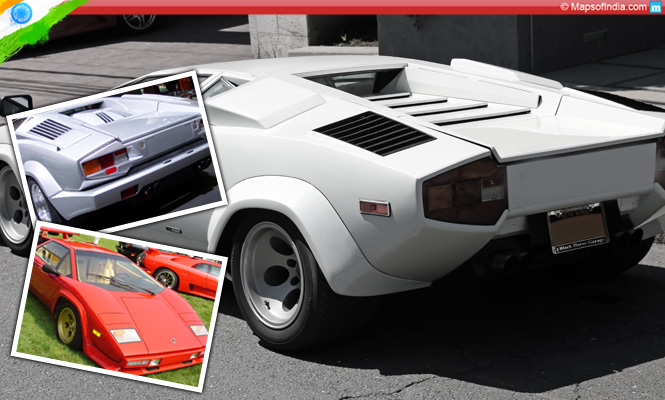
To have been born in the late eighties and early nineties is somewhat a matter of pride for possibly over hundreds of millions of people. Those years were the redefining age of the world and specially countries like India. Great industrial ties were formed, construction multiplied, technology was racing full speed ahead and with quite a zeal. The global automotive industry too, was booming. What many people don’t know, is that it was also the very same era, when an icon in the world of supercars caused a paradigm shift in the visual thinking and understanding of those involved in the industry and others alike – the Lamborghini Countach.
There have been many beautiful cars, fast and furious alike and then there have been those that have defined the term ‘supercar’ and in the best of ways. There weren’t many of them back in that period, their posters covering our walls from floor to ceiling, scale models or replicas of them adorning our show cases and mantels and dreams of someday being able to own them, haunting, teasing at us all through our childhood.
No electronic driving aids
Devoid of electronic driving aids and assisting technology, these cars were complicated machines that, like a kung-fu master, commanded full sincerity and concentration on the driver’s part – those who learnt and mastered handling them were handsomely rewarded with unmatched thrill and adrenaline, and those who jumped in without good experience and caution, just for the sake of it, rarely climbed out alive. There were no stabilizing system, no traction control, and no ABS to save fur and the very risk – the whole idea of even the slightest error on one’s part leading to crash and burn – apart from their iconic designs were what made them all the more special.
An exclamation of astonishment, the word ‘Countach’ has its origins from one of Italy’s oldest local languages – Piedmontese – and was used as an expression upon seeing something of great beauty or visual appeal.
The first introduction of the Countach, to the world, was made at the 1971 Geneva Motor show in the form of a prototype. It was designed and styled by Marcello Gandini of the Bertone Design studio, also the creators of the Lambo Miura. Since Gandini at that time was slightly less experienced in the ergonomic and practical aspects of automobile design, he was also unhindered by them. The Countach was shaped wide and low, and not very long at 4.1 metres. The angular wedge shaped body of the car was almost entirely made out of flat, trapezoidal panels.
Hinged at the front with horizontal attachments, allowing them to lift up and tilt forward, made the doors on this car, not just Lamborghini’s but also the world’s trademark firsts. The car’s tubular spaceframe chassis allows for high and wide door sills, partly for style and partly because the width of the car made regular doors very difficult to use in confined spaces, and of course since it was to redefine the marker for the visual appeal of supercars, regular doors were a big no. The car’s poor visibility on the rear, and wide door sills, eventually inspired drivers to adopt the method of reversing the car by sitting on the sill and looking over the top of it from outside.
A benchmark in styling and innovation
The car had a cabin forward design so as to allow enough space to house Lamborghini’s traditional V12, which was mounted longitudinally with mid-engined configuration and this contrasted that of the Miura’s which was centrally mounted and transversely installed. The Countach’s engine is mounted ‘backwards’ to allow for better weight distribution, with the output shaft and gearbox at the front of the engine, the driveshaft running back through the engine’s sump to the differential at the rear. The original idea was to have a 5 litre powerhouse, but instead, the Miura’s 4 litre plant was used. Eventually the Quattrovole model was given a 5167cc engine with four valves per cylinder.
The Countach came with six Weber carburettors till the 5000QV model was introduced and had Bosch K-Jetronic fuel injection. The car was covered in a skin of aircraft grade aluminum over its tubular frame – just like race cars.
In the year 1984, Ladret Design Studio located in Canada started producing replicas of the Countach. The form was sculpted from plaster and then a fibreglass mould was made of the form. The kits and cars included the tube frame chassis with an American V8. A total of 141 of these were built and the clients who purchased these have used them to further develop thousands of replicas in the last two decades.
The Lamborghini Countach is not just a supercar. It is a benchmark in styling, innovation and performance, and the overall package of awesomeness that it makes for, is till day, unparalelled.




